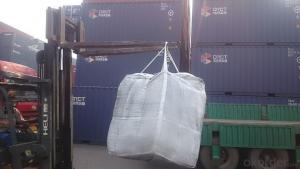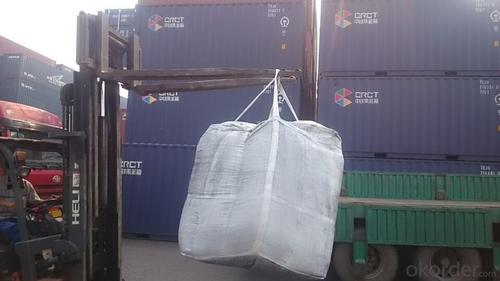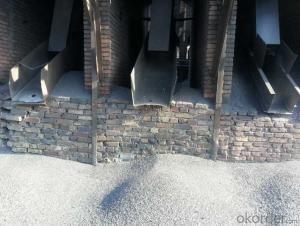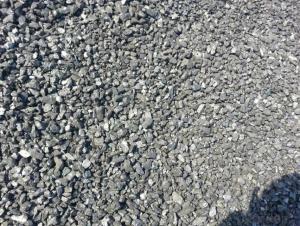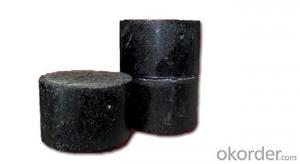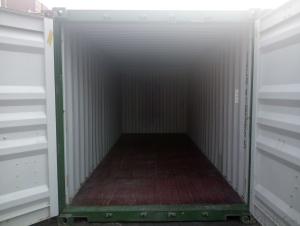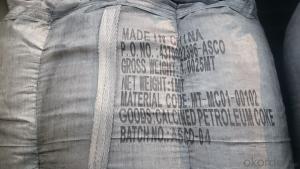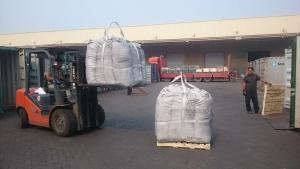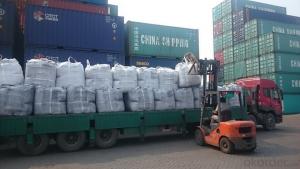Used in EAF as Charge Coke for Steel Mills Raw Materials
- Loading Port:
- Tianjin
- Payment Terms:
- TT OR LC
- Min Order Qty:
- 21 m.t.
- Supply Capability:
- 6000 m.t./month
OKorder Service Pledge
OKorder Financial Service
You Might Also Like
Introduction:
Calcined anthracite can be called carbon additive, carbon raiser, recarburizer, injection coke, charging coke, gas calcined anthracite.
Carbon Additive/Calcined Anthracite Coal may substitute massively refinery coke or graphite. Meanwhile its cost is much less than the refinery coke and graphite. Carbon Additive is mainly used in electric steel ovens, water filtering, rust removal in shipbuilding and production of carbon material.
It has good characteristics with low ash, low resistivity, low sulphur, high carbon and high density. It is the best material for high quality carbon products. It is used as carbon additive in steel industry or fuel.
Features:
Best quality Taixi anthracite as raw materials through high temperature calcined at 800-1200 ℃ by the DC electric calciner with results in eliminating the moisture and volatile matter from Anthracite efficiently, improving the density and the electric conductivity and strengthening the mechanical strength and anti-oxidation, It has good characteristics with low ash, low resistivity, low carbon and high density. It is the best material for high quality carbon products, it is used as carbon additive in steel industry or fuel.
Specifications:
F.C.% | 95MIN | 94MIN | 93MIN | 92MIN | 90MIN | 85MIN | 84MIN |
ASH % | 4MAX | 5MAX | 6 MAX | 6.5MAX | 8.5MAX | 12MAX | 13MAX |
V.M.% | 1 MAX | 1MAX | 1.0MAX | 1.5MAX | 1.5MAX | 3 MAX | 3 MAX |
SULFUR % | 0.3MAX | 0.3MAX | 0.3MAX | 0.35MAX | 0.35MAX | 0.5MAX | 0.5MAX |
MOISTURE % | 0.5MAX | 0.5MAX | 0.5MAX | 0.5MAX | 0.5MAX | 1MAX | 1MAX |
Pictures
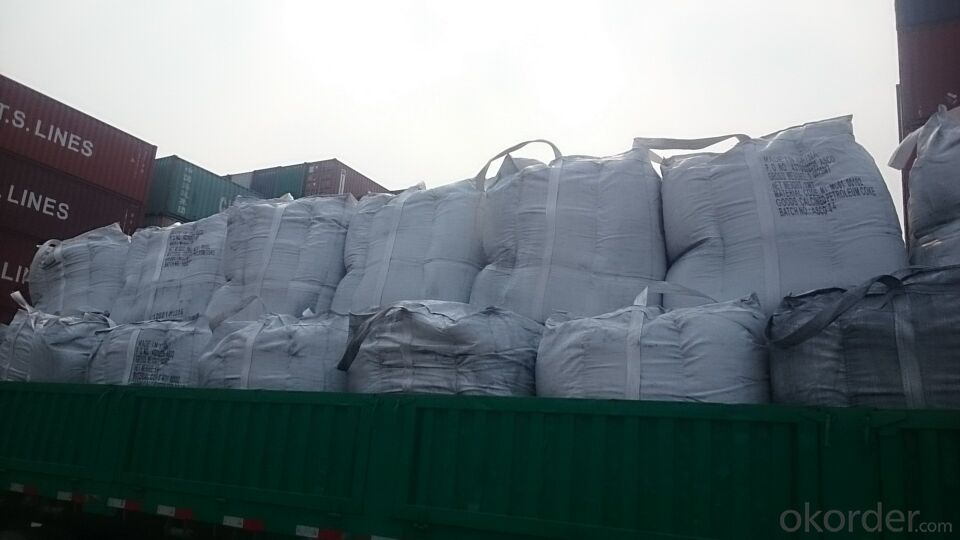
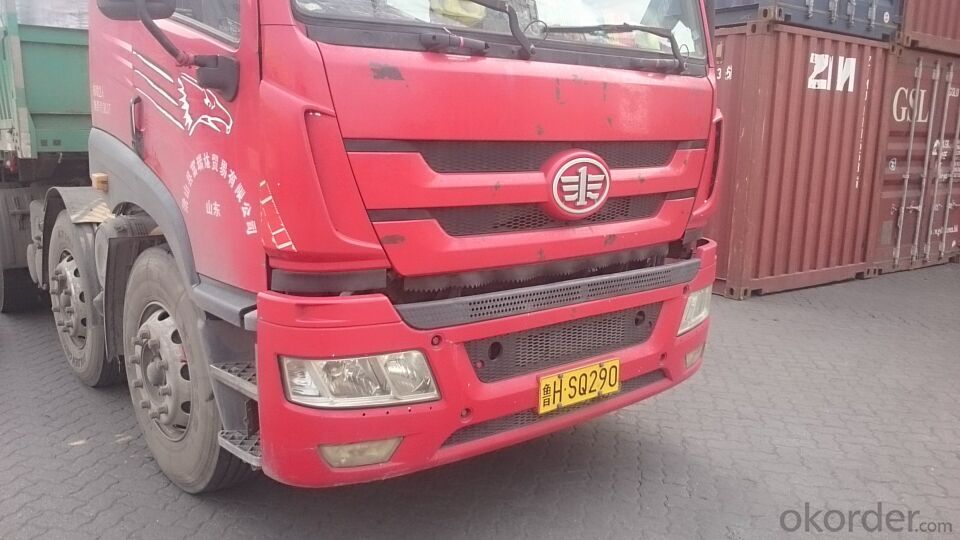
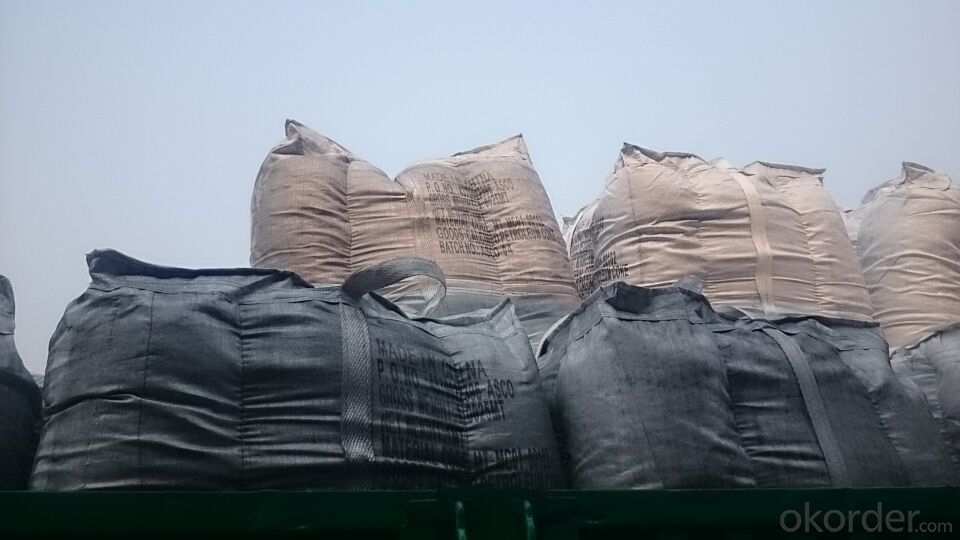
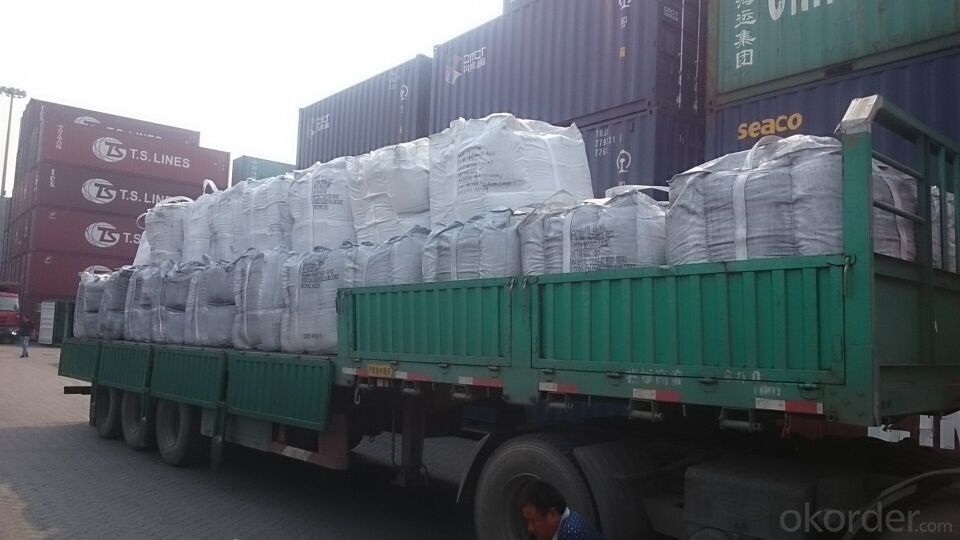
FAQ:
Packing:
(1). Waterproof jumbo bags: 800kgs~1100kgs/ bag according to different grain sizes;
(2). Waterproof PP woven bags / Paper bags: 5kg / 7.5kg / 12.5kg / 20kg / 25kg / 30kg / 50kg small bags;
(3). Small bags into jumbo bags: waterproof PP woven bags / paper bags in 800kg ~1100kg jumbo bags.
Payment terms
20% down payment and 80% against copy of B/L.
Workable LC at sight,
- Q: What is the carbon content of different types of rocks?
- The carbon content of different types of rocks can vary significantly. Generally, rocks are composed of minerals, and carbon is not a primary component of most minerals. However, some types of rocks can contain varying amounts of carbon due to the presence of organic matter or other carbon-rich materials. Sedimentary rocks, such as limestone and coal, have the potential to contain higher levels of carbon. Limestone is primarily composed of calcium carbonate, but it can also contain small amounts of organic matter or carbonates that contribute to its carbon content. Coal, on the other hand, is a sedimentary rock formed from the remains of plant material that has undergone extensive decomposition and carbonization. As a result, coal has a high carbon content, often ranging from 50% to 90%. Igneous rocks, which are formed from the solidification of molten material, generally have very low carbon content. This is because the process of magma crystallization does not involve the incorporation of carbon-rich materials. However, there can be exceptions in certain cases where magma interacts with carbon-rich fluids or rocks, leading to the formation of carbon-bearing minerals like graphite or diamond. Metamorphic rocks, which are formed through the transformation of existing rocks under high pressure and temperature conditions, may contain varying amounts of carbon. The carbon content in metamorphic rocks can be derived from the original rock or introduced through the process of metamorphism. For example, the presence of carbonaceous material in shale or limestone can be transformed into graphite or other carbon-rich minerals during metamorphism. It is important to note that while some rocks may contain significant carbon content, rocks are not considered a major reservoir of carbon in the Earth's carbon cycle. The majority of carbon is stored in the atmosphere as carbon dioxide, in the oceans, or in organic matter within living organisms.
- Q: We need to make a poster... Of the 27 essential elements of the human body, I am in charge of carbon! I haven't found it for a long time! Who can help me? Urgent!!!!!!Can you find something very specific? Thank you
- It can be said that without carbon, there would be no life. Carbon is Dongliangzhicai the world of life.
- Q: What are the impacts of carbon emissions on the spread of infectious diseases?
- The spread of infectious diseases is significantly impacted by carbon emissions. When fossil fuels like coal, oil, and natural gas are burned, they release large amounts of carbon dioxide (CO2) and other greenhouse gases into the atmosphere. These emissions contribute to climate change, which in turn affects the distribution and transmission of various infectious diseases. Changes in temperature are one of the main ways carbon emissions influence the spread of infectious diseases. As global temperatures rise, it creates favorable conditions for disease-causing agents and their vectors to survive and multiply. For example, warmer temperatures can expand the geographic range of disease-carrying insects like mosquitoes, which transmit diseases such as malaria, dengue fever, and Zika virus. Carbon emissions causing climate change can also disrupt ecosystems and alter the behavior of animals that serve as hosts or reservoirs for infectious diseases. Changes in migration patterns, breeding cycles, and hibernation can affect disease dynamics, making them harder to control. For instance, warmer temperatures may lead to an increase in tick populations, raising the risk of tick-borne diseases like Lyme disease. Moreover, carbon emissions contribute to air pollution, which negatively impacts respiratory health. Pollutants like particulate matter and nitrogen dioxide weaken the immune system, making individuals more vulnerable to respiratory infections such as influenza and pneumonia. These pollutants also worsen respiratory symptoms in people already infected with respiratory diseases. The effects of carbon emissions on the spread of infectious diseases extend beyond humans. Changes in climate patterns can disrupt agricultural systems, resulting in food insecurity and malnutrition. These conditions weaken the immune systems of vulnerable populations, making them more susceptible to infectious diseases. Recognizing the link between carbon emissions and the spread of infectious diseases is crucial in order to mitigate their impacts. Reducing carbon emissions by transitioning to cleaner energy sources and adopting sustainable practices can help mitigate climate change and limit the expansion of disease vectors. Additionally, investing in public health infrastructure and surveillance systems can improve our ability to detect and respond to outbreaks, minimizing their spread and impact on human populations.
- Q: What are the basic structures of iron carbon alloys?
- Ferrite: a solid solution in which carbon is dissolved in alpha -Fe, called ferrite. The symbol is Fe. Ferritic carbon content is very low, at 727 degrees of 0.0008%, and its mechanical properties similar to pure iron, strength and hardness is not high, plasticity and toughness good.Austenite: a solid solution in which carbon is dissolved in gamma -Fe, called austenite.
- Q: How does carbon affect the quality of drinking water?
- Carbon can affect the quality of drinking water through two main mechanisms: activated carbon filtration and carbon dioxide (CO2) absorption. Activated carbon filtration is commonly used in water treatment processes to remove organic contaminants, chemicals, and odors, improving the taste and odor of drinking water. On the other hand, excessive dissolved carbon dioxide in water can make it acidic and affect the pH level, potentially making it corrosive and altering the taste. However, carbon itself is not harmful to human health and can be beneficial in certain forms, such as in the form of activated carbon filters.
- Q: But their chemical symbols are different, so they are different elements, different substances, but they feel the same thing... Tangled up ~!
- One kind is metal, one kind is nonmetal, the property is not lively, the property is stable,
- Q: What is the relationship between carbon emissions and air pollution?
- The close connection between carbon emissions and air pollution cannot be understated. Burning fossil fuels, such as coal, oil, and natural gas, is the main source of carbon emissions, which release substantial amounts of carbon dioxide (CO2) into the atmosphere. This surge in CO2 levels significantly contributes to the greenhouse effect, which traps heat in the atmosphere and leads to global warming. On the other hand, air pollution refers to the presence of harmful substances in the air that can be detrimental to both human health and the environment. Although carbon dioxide itself is not directly toxic to humans, it plays a critical role in the formation of other air pollutants. One of the primary consequences of increased carbon emissions is the creation of fine particulate matter (PM2.5) and ground-level ozone (O3). These pollutants are formed through intricate chemical reactions involving CO2 and other pollutants like nitrogen oxides (NOx) and volatile organic compounds (VOCs). PM2.5 and O3 are notorious for causing respiratory problems, cardiovascular diseases, and various other health issues. Moreover, carbon emissions also contribute to the development of other air pollutants, such as sulfur dioxide (SO2), nitrogen oxides (NOx), and heavy metals. These pollutants are emitted alongside CO2 during diverse industrial processes, power generation, and transportation. They can have severe health consequences, including respiratory diseases, asthma, and even cancer. The reduction of carbon emissions plays a pivotal role in combatting air pollution. By transitioning to cleaner energy sources, such as renewables, and enhancing energy efficiency, we can significantly decrease the amount of CO2 and other pollutants released into the atmosphere. The implementation of stricter regulations and the adoption of cleaner technologies in industries and transportation can also aid in the reduction of air pollution and its associated health risks. In conclusion, the connection between carbon emissions and air pollution is inseparable. The release of CO2 and other pollutants from burning fossil fuels contributes to global warming and the formation of harmful air pollutants. Addressing the issue of carbon emissions is imperative in mitigating air pollution and safeguarding human health and the environment.
- Q: Consult the carbon content of austenite
- Pure iron carbon alloys, austenitic (A) carbon content in different grades, different temperature and different, in more than 727 degrees (727 degrees when the carbon content is 0.77%), 1148 degrees, 2.11% carbon content with see iron carbon phase diagram
- Q: The difference between graphite and carbon
- Graphite is a crystalline mineral of carbonaceous elements, and its crystalline framework is hexagonal layered structure
- Q: What is carbon dating?
- The determination of the age of organic artifacts, such as ancient human remains or archaeological objects, is made possible through the utilization of carbon dating, a scientific method. This method relies upon the presence of a small quantity of radioactive carbon-14, which is a rare isotope of carbon, within all living organisms. As an organism perishes, it ceases to absorb carbon-14, resulting in a gradual reduction of this isotope through radioactive decay. By calculating the ratio of carbon-14 to carbon-12 in a given sample, scientists are able to approximate the duration since the organism's demise. This technique offers precise estimations of age up to approximately 50,000 years, thereby proving invaluable when dating artifacts from prehistoric eras. The impact of carbon dating on the field of archaeology has been groundbreaking, as it has played a pivotal role in comprehending the chronologies of human history and the evolution of diverse civilizations.
Send your message to us
Used in EAF as Charge Coke for Steel Mills Raw Materials
- Loading Port:
- Tianjin
- Payment Terms:
- TT OR LC
- Min Order Qty:
- 21 m.t.
- Supply Capability:
- 6000 m.t./month
OKorder Service Pledge
OKorder Financial Service
Similar products
Hot products
Hot Searches
Related keywords
